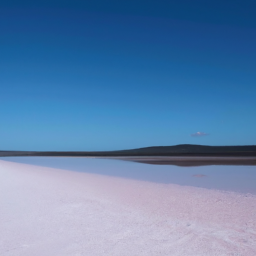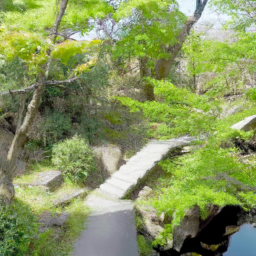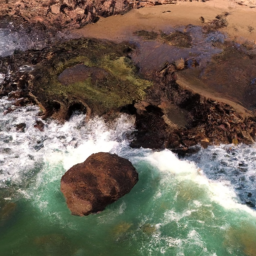“Experience the Pink Magic of Lake Hillier!”
Introduction
Lake Hillier is a stunning pink-hued lake located on Middle Island, off the south coast of Western Australia. It is one of the most unique and beautiful natural wonders in the world. The lake’s vibrant pink color is caused by a combination of the high salinity of the water, the presence of a salt-loving algae called Dunaliella salina, and the presence of a bacteria called halobacteria. The lake is surrounded by a rim of white sand and a dense forest of eucalyptus and paperbark trees. It is a popular tourist destination and is known for its unique color and beauty.
Exploring the Unique Pink Color of Lake Hillier
The unique pink color of Lake Hillier, located on Middle Island off the coast of Western Australia, has been a source of fascination for many years. The lake is approximately 600 meters long and surrounded by a rim of sand and dense woodland. Despite its remote location, the lake has become a popular tourist destination due to its remarkable color.
The cause of the lake’s pink hue has been the subject of much speculation. Some have suggested that the color is due to the presence of a type of algae, while others have suggested that the pink color is caused by a high concentration of salt in the water. However, recent research has revealed that the lake’s pink color is due to a combination of factors.
The most likely explanation for the lake’s pink color is the presence of a type of bacteria called halobacteria. These bacteria are able to produce a red pigment called carotenoids, which gives the lake its pink hue. The bacteria are able to survive in the lake’s high salt concentration, which is believed to be the result of the lake’s location in a salt-rich environment.
The lake’s pink color is also thought to be affected by the presence of other organisms, such as algae and diatoms. These organisms are able to produce a range of colors, including pink, which can contribute to the lake’s overall hue.
The unique pink color of Lake Hillier is a source of fascination for many, and its cause is still being studied. The lake’s remote location and its remarkable color make it a popular tourist destination, and its beauty is sure to captivate visitors for many years to come.
Uncovering the Mystery Behind the Salinity of Lake Hillier

The mysterious pink hue of Lake Hillier, located on Middle Island off the coast of Western Australia, has long been a source of fascination for scientists and tourists alike. But the lake’s most intriguing feature may be its salinity. Despite being surrounded by seawater, Lake Hillier has a salinity level that is much lower than the ocean. This has led to much speculation about the source of the lake’s unique salinity.
To understand the mystery behind Lake Hillier’s salinity, it is important to first understand the basics of salinity. Salinity is a measure of the amount of dissolved salts in a body of water. The ocean has a salinity of around 35 parts per thousand (ppt), while freshwater has a salinity of 0 ppt. Lake Hillier, however, has a salinity of only about 10-25 ppt.
The most likely explanation for the low salinity of Lake Hillier is that it is fed by freshwater streams and rivers. These streams and rivers contain very little salt, and as they flow into the lake, they dilute the salinity of the lake. This is further supported by the fact that the lake is located in an area with a high rainfall rate, which would further dilute the salinity of the lake.
Another possible explanation for the low salinity of Lake Hillier is that the lake is fed by underground springs. These springs are believed to be connected to the ocean, but they contain very little salt. As the water from these springs flows into the lake, it dilutes the salinity of the lake.
Finally, it is possible that the low salinity of Lake Hillier is due to the presence of certain bacteria in the lake. These bacteria are able to break down the salts in the water, thus reducing the salinity of the lake.
The mystery behind the salinity of Lake Hillier may never be fully solved, but the most likely explanation is that it is due to a combination of freshwater streams, underground springs, and bacteria. Whatever the cause, the low salinity of Lake Hillier is one of its most intriguing features, and it continues to draw visitors from around the world.
Investigating the Impact of Tourism on Lake Hillier’s Ecosystem
Lake Hillier, located on Middle Island off the coast of Western Australia, is a unique and remarkable natural phenomenon. Its pink hue is caused by a combination of the presence of a salt-loving algae called Dunaliella salina and a bacteria called halobacteria. This lake is a popular tourist destination, and its unique color has made it a popular subject for photographs and videos.
However, the impact of tourism on Lake Hillier’s ecosystem is a cause for concern. The influx of visitors to the lake has the potential to disrupt the delicate balance of the lake’s environment. The presence of people can cause physical damage to the lake’s shoreline, as well as introduce pollutants and contaminants into the water. Additionally, the presence of people can disturb the wildlife that inhabits the lake, such as fish, birds, and other aquatic species.
In order to protect the lake’s ecosystem, it is important to understand the impact of tourism on the lake. To this end, researchers have conducted studies to assess the effects of tourism on Lake Hillier. These studies have found that the presence of people can have a negative impact on the lake’s environment. For example, the presence of people can lead to increased levels of sedimentation, which can reduce the lake’s water clarity and reduce the amount of light that reaches the lake’s bottom. Additionally, the presence of people can lead to increased levels of nutrients in the water, which can lead to an increase in algae growth and a decrease in oxygen levels.
In order to protect the lake’s ecosystem, it is important to take steps to reduce the impact of tourism on Lake Hillier. This can include limiting the number of visitors to the lake, as well as implementing measures to reduce the amount of pollutants and contaminants that are introduced into the lake. Additionally, it is important to educate visitors about the importance of respecting the lake’s environment and to ensure that they are aware of the potential impacts of their actions.
By understanding the impact of tourism on Lake Hillier’s ecosystem, we can take steps to protect this unique and remarkable natural phenomenon. By taking the necessary steps to reduce the impact of tourism on the lake, we can ensure that Lake Hillier remains a beautiful and vibrant part of the Australian landscape for generations to come.
Q&A
Q: Where is Lake Hillier located?
Middle Island, off the south coast of Western Australia
Q: What makes Lake Hillier so unique?
Lake Hillier is a unique pink-colored lake due to the presence of a dye-producing algae called Dunaliella salina.
Q: Is it safe to swim in Lake Hillier?
Yes, it is safe to swim in Lake Hillier. However, visitors are not allowed to take any of the lake’s water away with them.
Conclusion
Lake Hillier is an amazing natural phenomenon that has captivated people for centuries. Its unique pink color is a result of the high salinity of the lake and the presence of a type of algae called Dunaliella salina. The lake is a popular tourist destination and is a great example of the beauty of nature. Its unique color and location make it a must-see for anyone visiting Australia.



